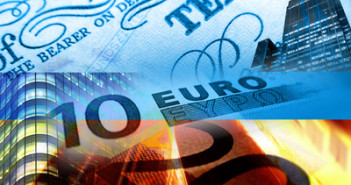It’s a quiet start to the new trading week for EUR/USD , as the pair trades in the mid-1.36 range in Monday’s European session. There is some concern in the markets following unexpectedly strong showings by anti-EU parties in European parliamentary elections, which took place on the weekend. It’s a very quiet day on the fundamental release front, with US markets closed for the Memorial Day holiday. In the Eurozone, German Consumer Confidence was unchanged in April at 8.5 points, matching the forecast. Later in the day, ECB head Mario Draghi will speak at an ECB forum in Lisbon.Â
- EUR/USD was quiet in the Asian session, trading around 1.3620. The pair has edged higher in European trading.
Current range: 1.3560 to 1.3650.
Further levels in both directions:Â Â 
- Below: 1.3560, 1.3515 and 1.3475 and 1.34
- Above: 1.3650, 1.37, 1.3740, 1.3785, 1.3830, 1.3865, 1.3905, 1.3964 and 1.40
- 1.3560 is providing strong support.Â
- On the upside, 1.3650 is under strong pressure. The round number of 1.37 follows.Â
EUR/USD Fundamentals
- 6:00 GfK German Consumer Climate. Estimate 8.5, actual 8.5 points.
- 8:00 ECB President Mario Draghi Speaks.
*All times are GMT
For more events and lines, see the EUR/USD EUR/USD EUR/USD EUR/USD EUR/USD .
EUR/USD Sentiment
- Shock in Europe as far-right parties surge: With Eurozone countries suffering from weak growth and high unemployment, voters had a chance to lash back in European parliamentary elections on the weekend, and their frustration and anger was heard loud and clear at the ballot box. Anti-EU and far-right parties in the UK, Germany and France made sweeping gains. French Prime Minister Manuel Valls called the results an “earthquake†and the elections could push down the euro, although so far the currency has remained firm.
- Fed thinking post-QE: There were no surprises from the  Federal Reserve minutes on Wednesday, and there was no dramatic response from the markets. In the minutes, policymakers discussed an exit strategy from its QE stimulus program, which is set to terminate at the end of 2014. This will likely mean an increase in interest rates once QE is over and done with, but the minutes didn’t provide a timetable as to when rates might go up and by how much. Low inflation levels means there is less pressure on the Fed to raise rates next year, but the economic conditions could change in the meantime. The Federal Reserve remains comfortable with its accommodative stance, and will want to see stronger growth and employment numbers before making changes to monetary policy, such as raising rates.
- Euro PMIs point down: Eurozone, German and French Manufacturing PMIs weakened last month, pointing to trouble in the manufacturing sector of the major Eurozone members. The French indicator dipped to 49.3 points, pointing to contraction. German and Eurozone data remained above the 50-point level, which points to expansion, but both fell short of expectations. Weak PMIs is one more reason why the ECB could make a monetary move in June.
- Will the ECB press the trigger? After climbing close to the key 1.40 level, the euro put on the brakes after ECB president Mario Draghi stated he was prepared to take action in June to tackle low growth and weak inflation. The markets have heard tough talk (and no action) from Draghi before, but there is a feeling in the air that the June ECB meeting could be different. There is speculation that the ECB could cut the benchmark rate, which is currently at just 0.25%, or lower deposit rates, which are at 0%, into negative territory. As we get closer to the June meeting, traders can expect some volatility from EUR/USD.



